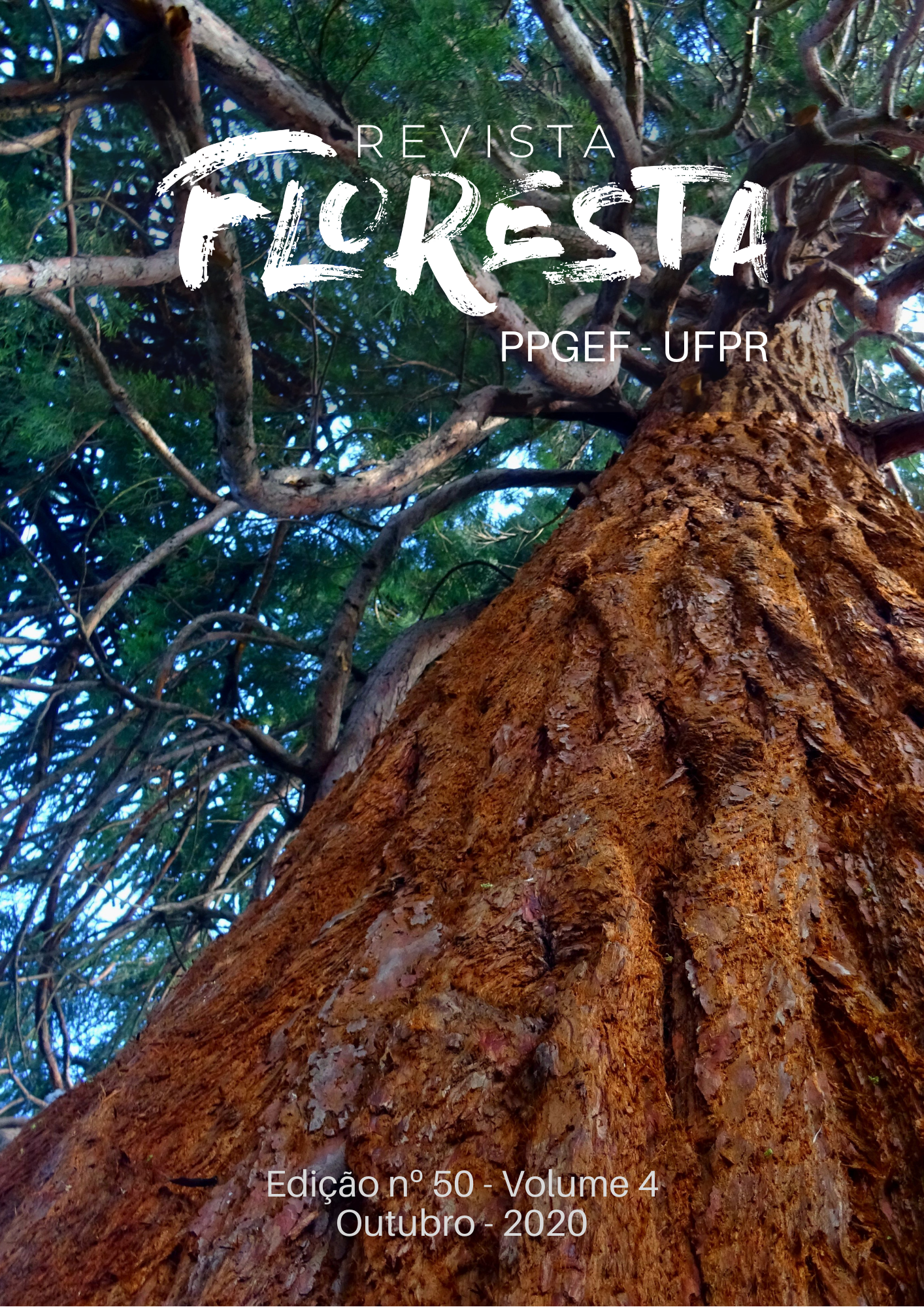FOREST FIRE RISK ZONING FOR THE VILA VELHA STATE PARK AND ITS SURROUNDINGS (PONTA GROSSA, PARANÁ)
DOI:
https://doi.org/10.5380/rf.v50i4.65974Palavras-chave:
Forest protection, fire hazard, protected areas, prevention and suppressionResumo
Forest fire hazard and risk mapping is an essential tool for planning and decision making regarding the prevention and suppression of forest fires,as well as fire management in general, as it allows the spatial visualization of areas with higher and lower ignition probability. This study aimed to develop a forest fire risk zoning map for the Vila Velha State Park and its surroundings (Ponta Grossa, Paraná State, Brazil), for the period of higher incidence of forest fires (from April to September) and for the period of lower incidence (from October to March). The following risk and hazard variables were identified: human presence, usage zones, topographical features, soil coverage and land use and meteorological conditions. Coefficients (0 to 5) reflecting the fire risk or hazard degree were allocated to each variable in order to construct the maps. The integration of these maps, through a weighting model, resulted in the final risk mapping. The very high and extreme risk classes represented about 38% of the area for both periods. The forest fire risk mapping spatially represented the levels of fire risk in the area, allowing the managers to identify the priority sectors for preventive actions in both fire seasons.
Downloads
Publicado
Como Citar
Edição
Seção
Licença
Direitos Autorais para artigos publicados nesta revista são do autor, com direitos de primeira publicação para a revista. Em virtude da aparecerem nesta revista de acesso público, os artigos são de uso gratuito, com atribuições próprias, em aplicações educacionais e não-comerciais.A revista, seguindo a recomendações do movimento Acesso Aberto, proporciona acesso publico a todo o seu conteudo, seguindo o principio de que tornar gratuito o acesso a pesquisas gera um maior intrcambio global de conhecimento.
Conteúdos do periódico licenciados sob uma CC BY-NC-SA 4.0



